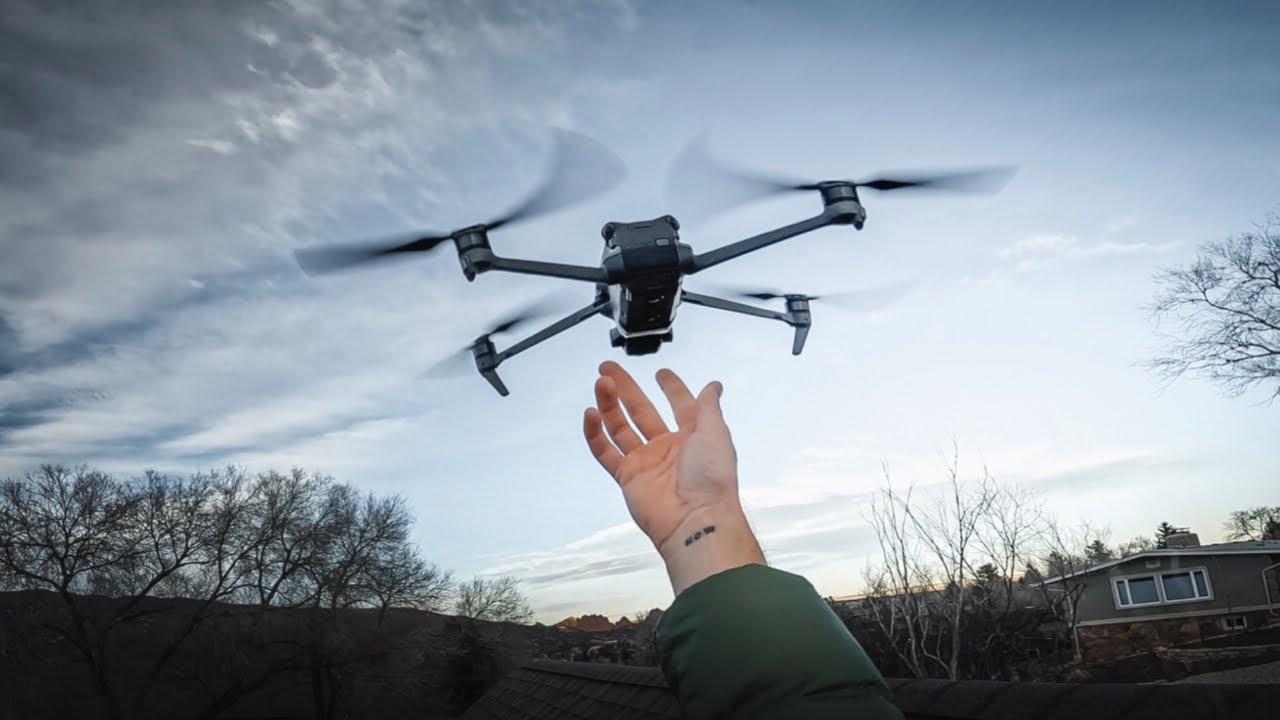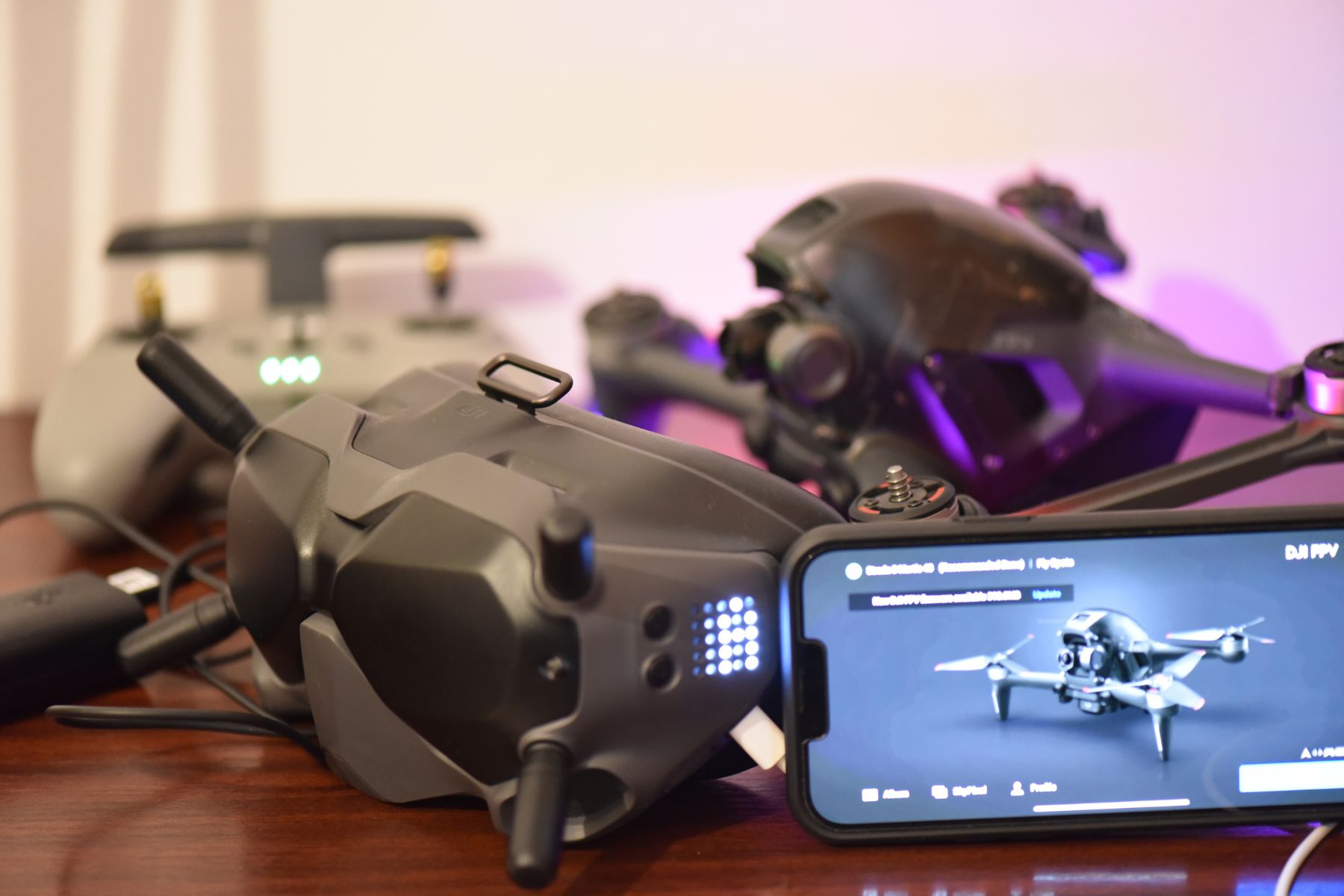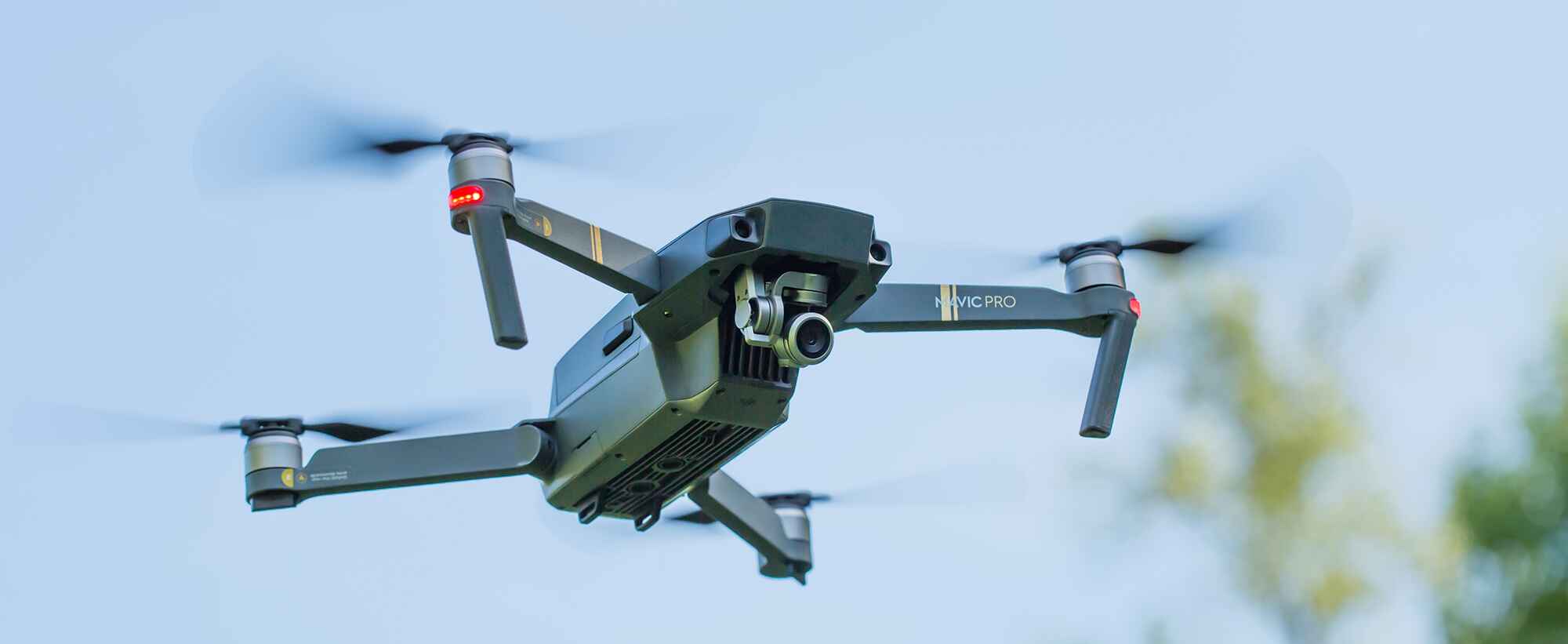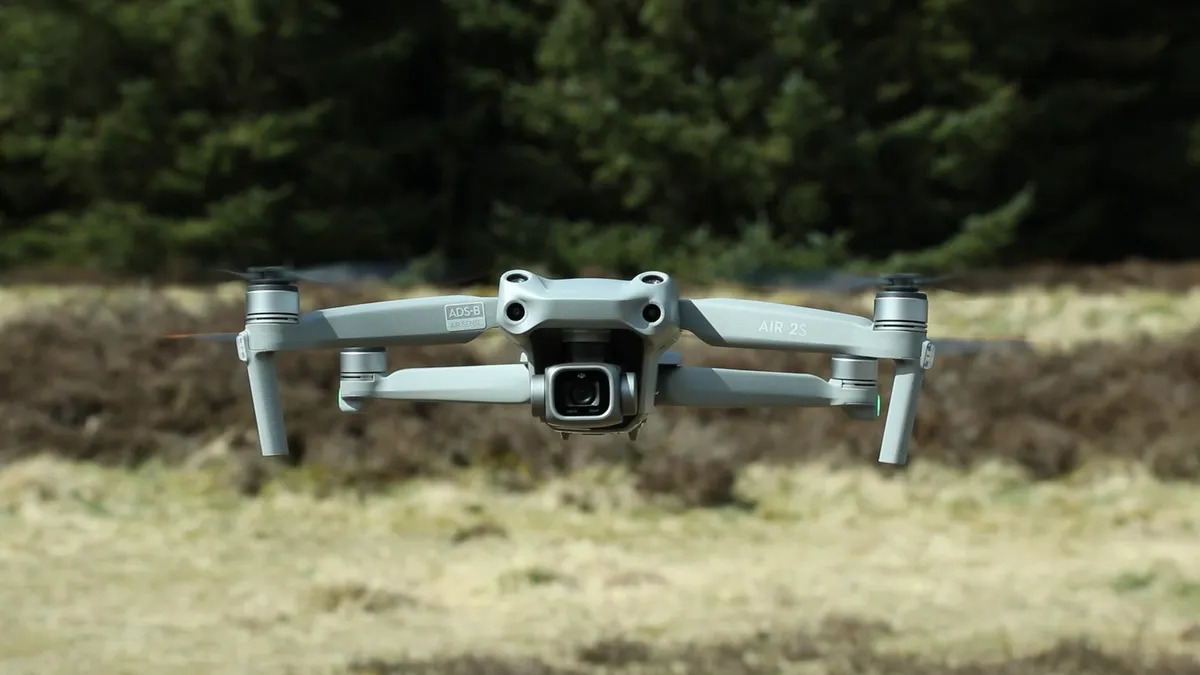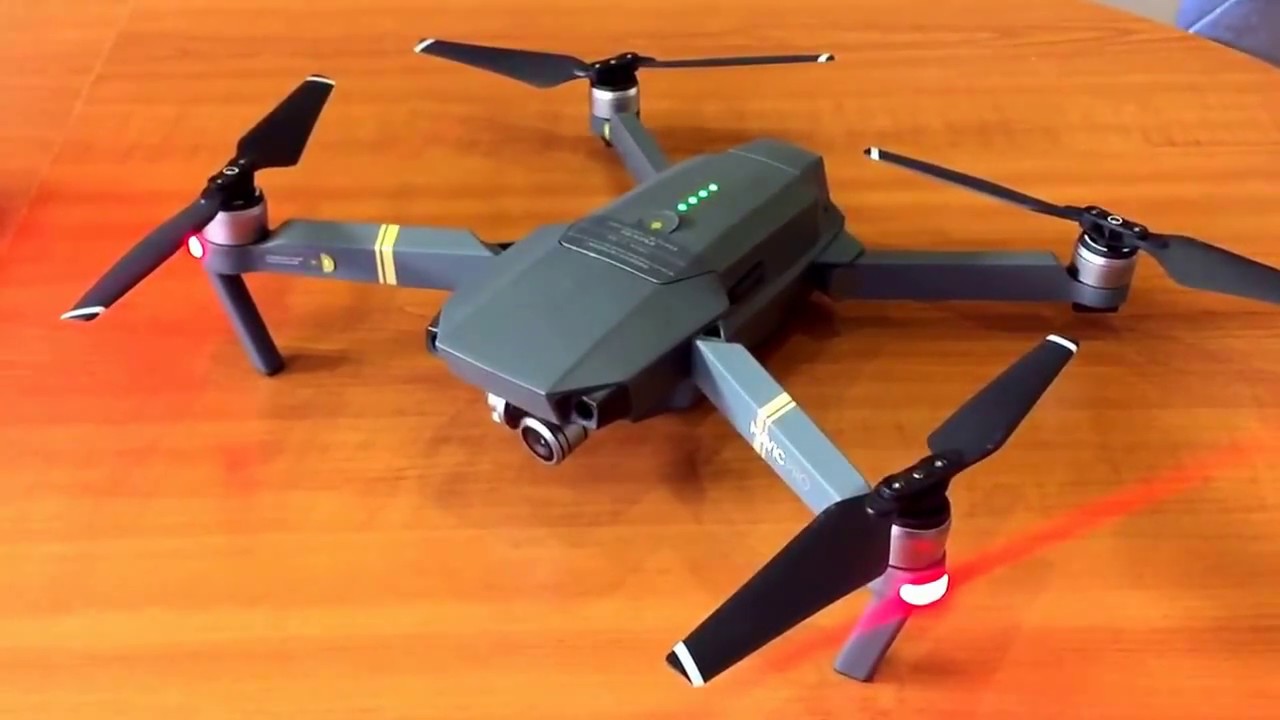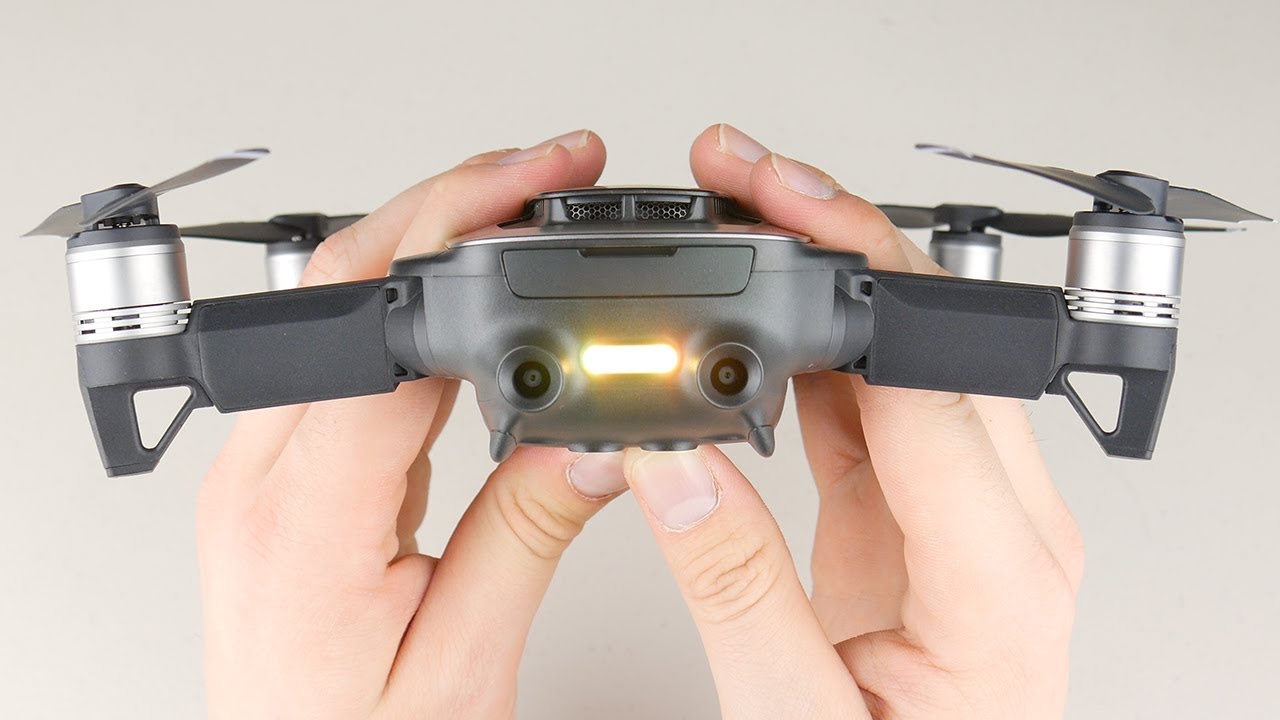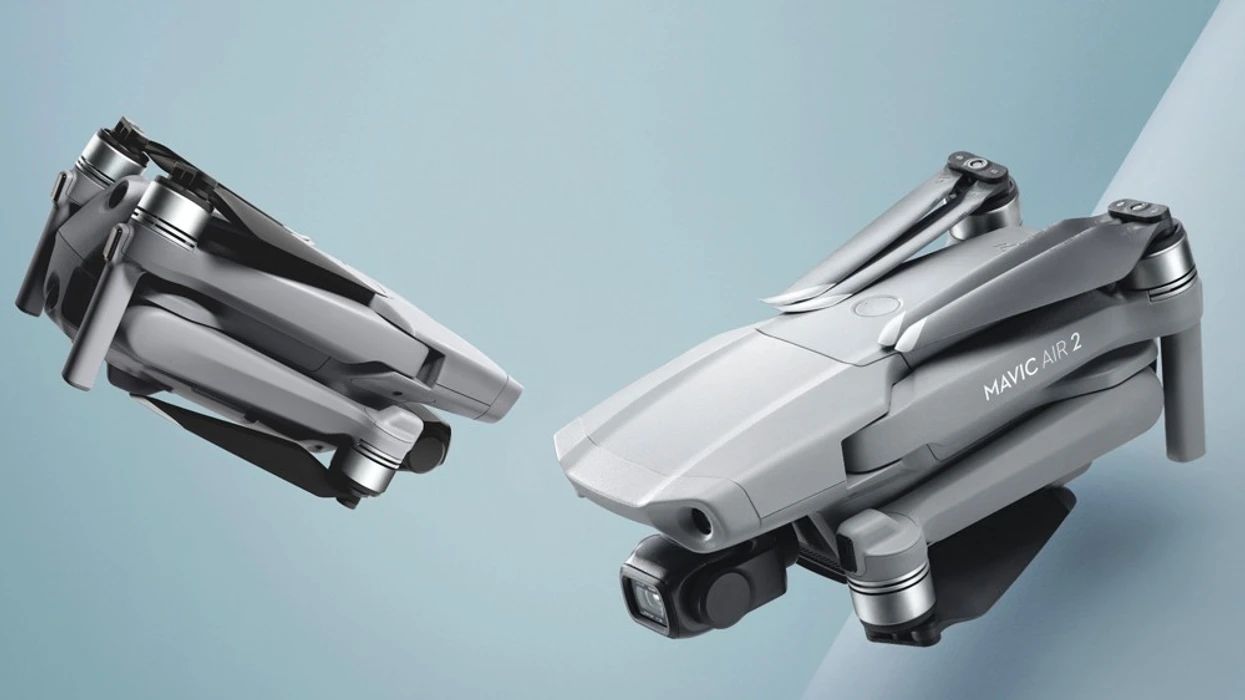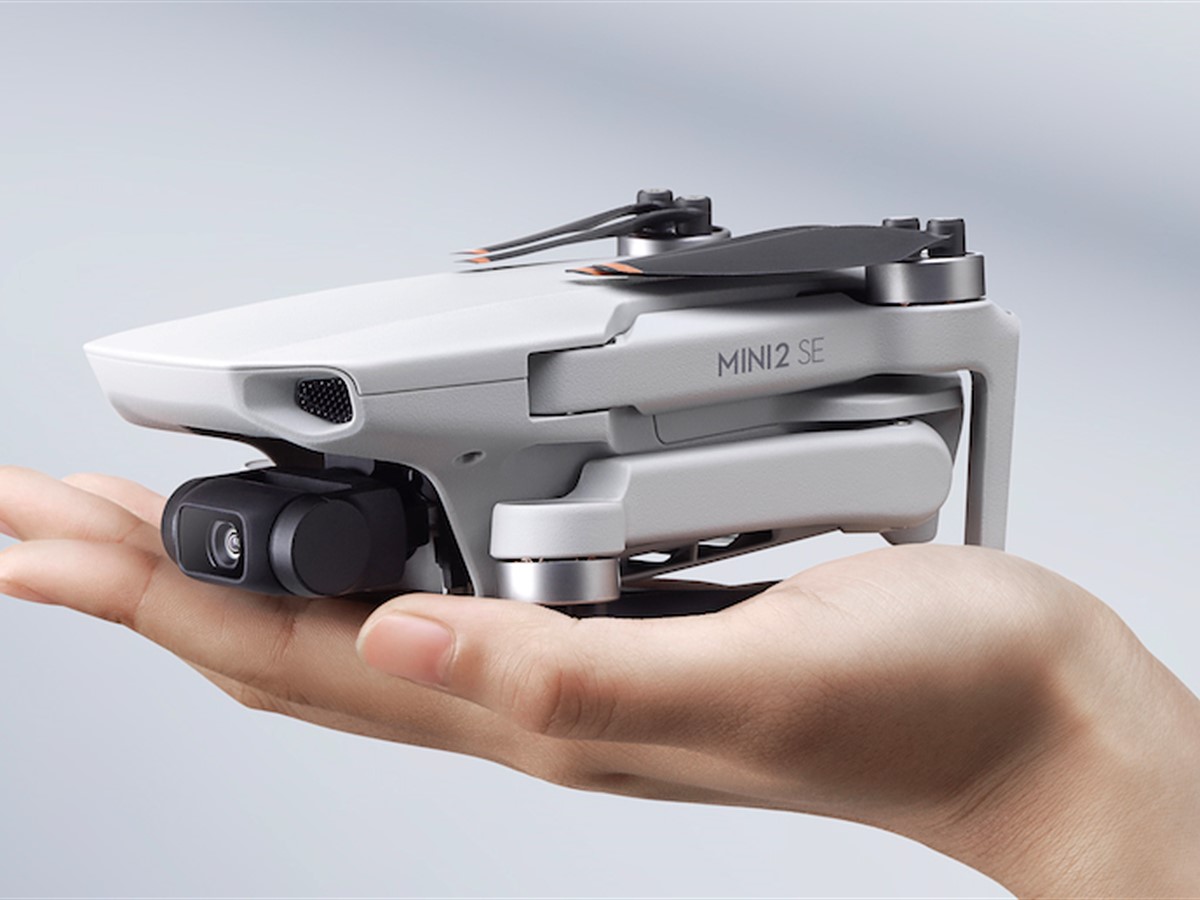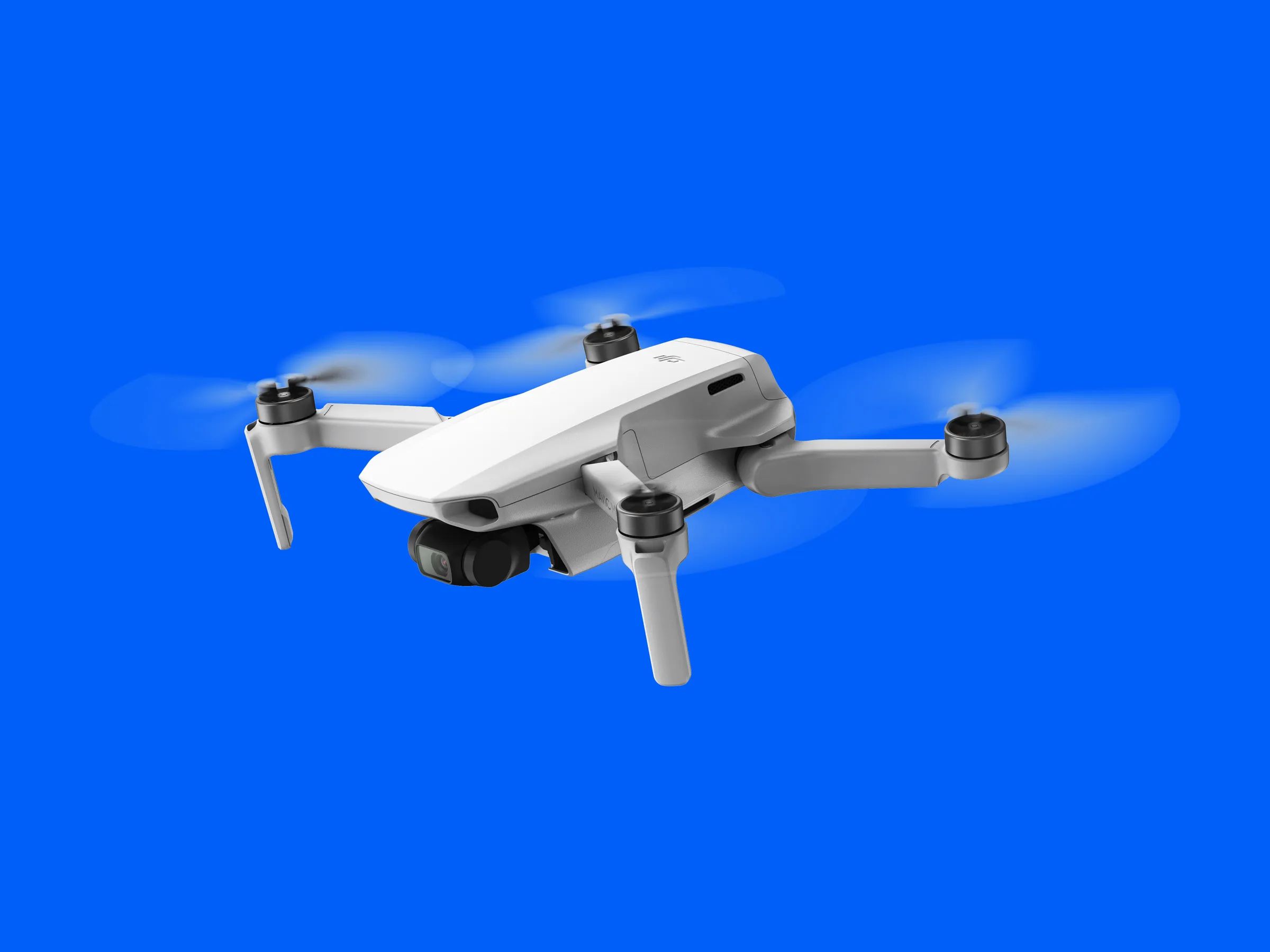Introduction
Drones have revolutionized the way we capture breathtaking aerial footage, and DJI is at the forefront of this technology. The DJI Mavic 3, the latest addition to the Mavic series, offers remarkable features and capabilities. One of the most important considerations for drone users is the flight range – how far can the DJI Mavic 3 fly? Understanding the range of this impressive drone is crucial for both recreational and professional drone pilots.
The flight range of the DJI Mavic 3 refers to the maximum distance it can travel from the remote controller before losing signal or running out of battery power. This range determines how far you can explore and record stunning aerial vistas, gather data, or conduct inspections. The longer the flight range, the more versatile and valuable the drone becomes for various applications.
When it comes to the flight range of the DJI Mavic 3, there are several factors that influence its capabilities. Understanding these factors is essential for optimizing the drone’s performance and ensuring safe and successful flights. Additionally, there are tips and techniques that can help extend the flight distance, enabling you to push the boundaries of your aerial adventures.
However, it’s important to note that drone regulations and safety guidelines must be followed while operating the DJI Mavic 3. The maximum flight range should always be within the legal limits and considering safety precautions. Ignoring these aspects can lead to fines, accidents, or damage to the drone.
In this article, we will delve into the factors that affect the maximum flight distance of the DJI Mavic 3, providing you with insights and guidance on optimizing its range. We will also share some handy tips for extending its flight distance, and discuss important legal and safety considerations. Lastly, we’ll explore real-life examples showcasing the impressive flight range of the DJI Mavic 3, giving you a clearer understanding of its capabilities.
Understanding the Range of DJI Mavic 3
The flight range of the DJI Mavic 3 is determined by the technology and specifications integrated into the drone. The Mavic 3 features an advanced transmission system that utilizes both Wi-Fi and OcuSync technology. This combination ensures a stable and reliable connection between the drone and the remote controller, enabling a longer flight range.
The advertised flight range of the DJI Mavic 3 is typically stated as the maximum distance between the drone and the remote controller before signal loss occurs. This range can vary depending on different factors, such as obstacles, interference, and environmental conditions.
The Mavic 3’s flight range is also influenced by its battery life. The longer the battery can sustain power, the further the drone can venture. DJI has made significant advancements in battery technology, equipping the Mavic 3 with a high-capacity battery that extends the flight time. However, it’s important to note that the drone’s flight range may be reduced if it is carrying additional payload or accessories, as these factors can impact battery consumption.
Another crucial factor in understanding the flight range of the DJI Mavic 3 is its line-of-sight capability. In most countries, drone operators are required to maintain visual contact with their drone at all times. The Mavic 3 is designed with advanced obstacle avoidance sensors and visual positioning systems, which help the drone maintain a stable flight and avoid collisions. These features not only enhance flight safety but also allow the pilot to confidently fly the drone within their line of sight, maximizing the range.
It’s worth noting that the advertised flight range of the DJI Mavic 3 is based on ideal conditions, free from interference and obstacles. In reality, the range may be impacted by various factors such as Wi-Fi interference, buildings, trees, and other obstacles that can weaken the signal strength. It’s crucial to assess the environment before each flight to ensure optimal signal strength and range.
Understanding the range of the DJI Mavic 3 is important to plan your flights effectively. It allows you to assess the limitations of the drone and plan the duration and distance of your aerial missions accordingly. By having a clear understanding of the range, you can optimize flight paths and make the most out of your drone’s capabilities.
Factors Affecting Maximum Flight Distance
Several factors can impact the maximum flight distance of the DJI Mavic 3. Understanding these factors is crucial for optimizing the drone’s range and ensuring safe and successful flights.
One of the primary factors affecting the maximum flight distance is the mode of transmission. The DJI Mavic 3 utilizes both Wi-Fi and OcuSync technology for communication between the drone and the remote controller. OcuSync is known for its long-range capabilities and stability, allowing for extended flight distances. However, if the drone is set to Wi-Fi mode, the range may be limited compared to OcuSync mode due to potential interference and obstructions.
Environmental conditions play a significant role in determining the maximum flight distance. Strong winds can impact the drone’s stability and reduce its range. It is recommended to fly the Mavic 3 in calmer weather conditions to ensure better control and maximize its flight distance. Additionally, higher altitudes require more power to maintain flight, which can also affect the overall range of the drone.
Obstacles in the flight path can significantly impact the maximum flight distance. The DJI Mavic 3 comes equipped with advanced obstacle avoidance sensors that allow it to detect and avoid obstacles during flight. However, if the drone encounters multiple obstacles in its flight path, it may require more power to navigate around them, leading to a reduced flight distance.
Battery life is a critical factor in determining the maximum flight distance. The DJI Mavic 3 is equipped with a high-capacity battery that offers an extended flight time. However, environmental conditions, flying maneuvers, and payload can all impact the battery life and, ultimately, the flight distance. It’s essential to plan flights accordingly, consider the estimated flight time, and ensure that the battery has sufficient charge to support the desired distance.
Lastly, the signal strength between the drone and the remote controller is vital for determining the maximum flight distance. Interference from other electronic devices, buildings, or radio towers can weaken the signal strength, reducing the range of the drone. It is advisable to fly the Mavic 3 in areas with minimal interference to maximize the flight distance and maintain a stable control connection.
By considering and managing these factors, drone pilots can optimize the maximum flight distance of their DJI Mavic 3. It’s important to conduct thorough pre-flight planning, understand the limitations of the drone, and ensure that all conditions align for safe and successful flights.
Optimizing Flight Distance with DJI Mavic 3
To optimize the flight distance of the DJI Mavic 3, it’s important to consider a few key strategies and techniques. These tips will help you make the most out of your drone’s capabilities and extend its range for longer and more productive flights.
First and foremost, ensuring that the Mavic 3 is in OcuSync transmission mode is crucial for maximizing flight distance. OcuSync technology provides a stronger and more stable connection between the drone and the remote controller, allowing for longer distances to be covered. By selecting this mode, you enhance the communication range and minimize the risk of signal dropouts during flight.
Planning your flight route and minimizing obstacles along the way can also positively impact the flight distance. By surveying the area and identifying potential barriers such as buildings, trees, or other obstructions, you can choose a clear and unobstructed path for the drone. This reduces the need for the Mavic 3 to navigate around obstacles, minimizing power consumption and extending the flight distance.
Another strategy to optimize flight distance is to fly the Mavic 3 in optimal weather conditions. Calm and wind-free days provide better stability for the drone, allowing it to maintain its flight path more efficiently. By avoiding strong winds, you reduce the power needed to counter wind resistance and increase the overall flight distance. Additionally, flying in favorable weather conditions reduces the risk of potential accidents and improves overall flight safety.
Managing battery consumption is crucial for maximizing flight distance. To optimize battery usage, start with a fully charged battery and avoid flying in extreme temperature conditions, as they can affect battery performance. Additionally, refrain from flying aggressively or performing excessive maneuvers, as these actions consume more power. Utilize the DJI Fly app to monitor battery levels during flight and be aware of an estimated Return to Home (RTH) time to ensure a safe return within the flight distance.
Lastly, maintaining a clear line of sight with the drone is essential for both legal compliance and optimal flight distance. In most countries, drone regulations dictate that the pilot must maintain visual contact with the aircraft at all times. By keeping an unobstructed view of the Mavic 3, you can fly it confidently within your line of sight, thereby maximizing its flight distance.
By implementing these strategies and techniques, you can optimize the flight distance of your DJI Mavic 3 and unlock its full potential. Remember to always prioritize safety and adhere to local drone regulations while enjoying your extended aerial adventures.
Tips for Extending DJI Mavic 3’s Range
Extending the range of the DJI Mavic 3 can open up new possibilities for aerial exploration and creative opportunities. Here are some valuable tips to help you get the most out of your Mavic 3 and maximize its flight distance.
- Optimize Your Settings: Prioritize the drone’s performance by adjusting the settings. Use the DJI Fly app to set the transmission mode to OcuSync for a more stable and longer range connection.
- Fly in Optimal Conditions: Take advantage of calm weather conditions with minimal wind to reduce power consumption. Moderate temperatures help maintain battery performance, supporting longer flights.
- Minimize Obstacles: Plan your flight path to avoid obstacles such as buildings, trees, and other structures. Flying in open areas allows the Mavic 3 to cover more distance without the need to divert around barriers.
- Monitor Battery Usage: Keep a close eye on your battery levels during flight using the DJI Fly app. Avoid aggressive maneuvers and excessive acceleration to conserve battery power and extend flight time.
- Avoid Interference: Fly in areas with minimal interference from other Wi-Fi signals or electromagnetic radiation. This reduces the risk of signal loss and enables a more extended flight range.
- Optimal Altitude: Flying at higher altitudes can decrease flight time due to increased power consumption. Stay at a reasonable altitude to conserve battery power and maintain a longer flight distance.
- Opt for Manual Mode: Using manual flight mode rather than relying solely on GPS-assisted control can optimize the drone’s range, as the GPS signal can sometimes limit the maximum distance.
- Regular Maintenance: Keep your Mavic 3 in optimal condition by regularly inspecting and maintaining its components. Clean the sensors and camera lens to ensure maximum visibility and accuracy during flight.
- Reduce Payload: Carrying additional accessories or payloads can decrease the flight distance. When maximizing range is your goal, consider reducing unnecessary weight to improve the drone’s performance.
By implementing these tips, you can effectively extend the flight range of your DJI Mavic 3 and explore new horizons with your aerial photography and videography projects.
Legal and Safety Considerations for Long Flights
When planning long flights with your DJI Mavic 3, it is crucial to prioritize both legal compliance and flight safety. Here are some important considerations to keep in mind:
1. Check Local Regulations: Familiarize yourself with the drone regulations in your area. Different countries and regions have specific rules regarding drone flights, including maximum altitude, flight range, airspace restrictions, and licensing requirements. Ensure that your long flights comply with these regulations to avoid legal consequences.
2. Maintain Line of Sight: Most drone regulations require pilots to maintain visual contact with their aircraft at all times. This means that you should always be able to see your DJI Mavic 3 without the assistance of visual aids such as binoculars or FPV goggles. Ensure that your planned long flights allow you to maintain a clear line of sight with the drone throughout the entire duration.
3. Get Proper Permissions: Beyond general regulations, certain areas may have additional restrictions or require specific permissions for flying a drone. If you plan to fly in controlled airspace, near airports, or in other restricted zones, it is essential to obtain the necessary permissions and permits. Take the time to research and communicate with the appropriate authorities before undertaking long flights in such areas.
4. Conduct Pre-flight Checks: Before embarking on a long flight, thoroughly inspect your DJI Mavic 3 for any signs of damage or malfunctions. Check the battery status, ensure all firmware is up to date, and calibrate the compass. Regularly perform a pre-flight checklist to confirm that the drone is in optimal condition for a safe and successful flight.
5. Plan for Emergencies: Long flights increase the risk of unexpected situations, such as signal loss, adverse weather conditions, or technical failures. Always have a contingency plan in place and be prepared for emergencies. This may include having a designated safe landing area, a communication plan with a ground crew, or carrying necessary safety equipment like a fire extinguisher or a first aid kit.
6. Keep a Flight Log: Maintaining a flight log is not only a good practice for record-keeping but also helps you track the flight duration, distances covered, and any incidents that occurred during the long flights. In case of any investigations or incidents, a detailed flight log can provide valuable information and proof of compliance.
By adhering to these legal and safety considerations, you can ensure that your long flights with the DJI Mavic 3 are both enjoyable and conducted within the guidelines and regulations governing drone operations.
Real-life Examples of DJI Mavic 3’s Flight Range
The DJI Mavic 3 boasts impressive flight range capabilities that have been put to the test by drone pilots in various real-life scenarios. Here are some examples showcasing the remarkable flight distances achieved with the Mavic 3:
1. Landscape Photography: A professional landscape photographer took their DJI Mavic 3 to a picturesque mountainous area. With optimal weather conditions and careful flight planning, they were able to cover a range of over 5 kilometers (3.1 miles) to capture breathtaking aerial shots of the scenic landscape. The stable connection and extended flight range of the Mavic 3 allowed them to explore vast areas and capture stunning photographs from unique perspectives.
2. Inspection and Surveying: In the construction industry, the DJI Mavic 3 has proven to be a valuable tool for aerial inspections and surveying. A surveyor successfully completed a long-distance inspection of a building facade by flying the Mavic 3 over 2 kilometers (1.2 miles) away from the controller. This allowed them to thoroughly examine the structure without the need for risky and time-consuming physical access, improving efficiency and reducing costs.
3. Wildlife Monitoring: Wildlife biologists have utilized the DJI Mavic 3 to monitor and study the behavior of animals in their natural habitats. By carefully planning their flights and maintaining line of sight, they have been able to cover distances of up to 3 kilometers (1.9 miles) to observe and document wildlife without disrupting their natural environment. The extended flight range of the Mavic 3 enables researchers to gather valuable data in a non-intrusive and respectful manner.
4. Search and Rescue: The DJI Mavic 3 has also been instrumental in search and rescue operations. In a recent emergency situation, a DJI Mavic 3 was deployed to search for a missing hiker in a vast wilderness area. With its extended flight range, the drone covered an area of over 4 kilometers (2.5 miles), locating the lost individual and providing crucial information to the rescue team for a successful rescue operation.
These real-life examples demonstrate the incredible flight range capabilities of the DJI Mavic 3 and how it can be utilized in various industries and applications. However, it’s important to note that achieving these distances requires careful planning, adherence to regulations, and prioritizing safety at all times.
Conclusion
The DJI Mavic 3 presents drone enthusiasts and professionals with an impressive flight range and opens up exciting possibilities for aerial exploration, photography, videography, inspections, and more. Understanding the range of the Mavic 3 and the factors that can affect its flight distance is paramount to optimize its capabilities and ensure safe and successful flights.
By utilizing the OcuSync transmission mode, avoiding obstacles, flying in optimal conditions, monitoring battery usage, and minimizing interference, drone pilots can extend the flight distance of their Mavic 3. These strategies, combined with adhering to regulations, maintaining line of sight, and prioritizing safety, provide an excellent foundation for maximizing the drone’s range.
Real-life examples showcase how the Mavic 3’s flight range has been leveraged in various industries, such as landscape photography, inspection and surveying, wildlife monitoring, and search and rescue operations. The extended flight range of the Mavic 3 enables professionals to capture stunning imagery, gather valuable data, and make significant contributions in their respective fields.
However, it’s essential to remember that achieving these flight distances requires careful planning, compliance with regulations, and responsible piloting. Pilots should always prioritize safety, perform pre-flight checks, secure necessary permissions, and be prepared for emergencies throughout their drone flights.
With its remarkable flight range and powerful features, the DJI Mavic 3 has cemented its position as a leading drone in the market. By understanding its capabilities, optimizing flight distance, and following legal and safety considerations, drone pilots can fully unlock the potential of the Mavic 3 and embark on incredible aerial journeys.







